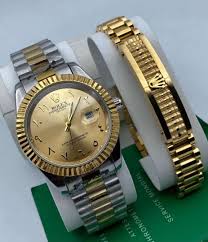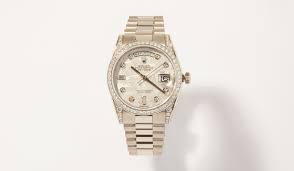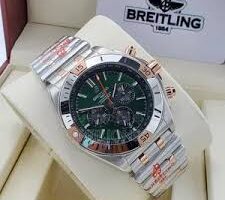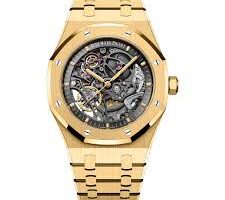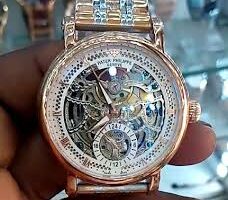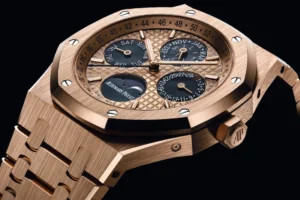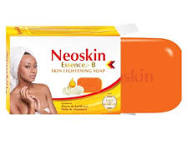If you’re looking into the rolex wrist watch price, you’ve come to the right place. In this article we’ll explore how much a Rolex wrist watch costs today, what drives the price, how the secondary market works, and what you should watch out for when buying. The focus keyword (“rolex wrist watch price”) appears in this first paragraph and will be woven naturally throughout the article.
What is the “rolex wrist watch price” today?
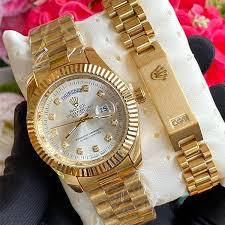
When you look up the rolex wrist watch price you’ll see a broad spectrum. According to the official manufacturer list and market data:
- The official MSRP for many current models starts around US $6,500 and can go up to US $167,000 or more for new models.
- Market-data aggregators report average prices around US $12,000 for many models, but with some models ranging from US $2,000 (often older, vintage or stainless steel) up to over US $200,000 for rare or highly desirable models.
- For example: women’s models in stainless steel start below US $10,000 in many cases.
So if you hear “a Rolex costs US $5,000” or “US $50,000”, both can be true depending on the model, material, market, condition, and whether it’s new or used.
Retail vs. secondary market: why the “rolex wrist watch price” varies
The “rolex wrist watch price” you see advertised doesn’t always reflect what you’ll actually pay. Here’s why:
- Authorized Retail Price (MSRP): This is the price listed by Rolex for a new watch sold through an authorized dealer. For many watches, this is the baseline. Accessing this price, however, may involve long waiting lists because of high demand.
- Secondary Market / Resale Market: Often the actual price paid is higher than the MSRP, especially for in-demand models. For example, a stainless steel Rolex Submariner may cost several thousand dollars above its retail price in the resale market.
- Vintage / Collectible Market: Rare references, discontinued models, or watches with provenance can fetch multiples of a “normal” retail price sometimes hundreds of thousands or even millions (though that’s the extreme end).
So when assessing the “rolex wrist watch price”, it’s important to ask: Are we talking about retail, resale/secondary, or vintage/collectible?
Key factors that influence the “rolex wrist watch price”
There are several major factors that determine what price you’ll pay. Understanding these helps you evaluate whether a price is fair or inflated.
a) Materials & Finishes
- A watch made with stainless steel will cost significantly less than one made of gold, platinum, or set with diamonds.
- Precious-metal models incur higher raw-material cost and thus higher retail pricing. For example, a gold model could see an 8 %+ price increase due to rising gold costs.
b) Model & Reference / Popularity
- Some model lines are more coveted (e.g., the Submariner, the Rolex Daytona, the Rolex GMT‑Master II) which drives demand (and typically higher resale pricing).
- Discontinued references or limited edition models often command premium prices due to rarity.
c) Condition & Completeness
- A watch in mint condition with box & papers will fetch more than one with heavy wear or missing documentation.
- Whether it has been serviced, whether parts (bracelet, bezel, etc) are original, all affect price.
d) Market Supply & Demand
- When supply is tight (e.g., new models hard to get), resale prices go up. The official site notes that some models are “difficult to obtain from authorised dealers”.
- Global economic conditions, currency fluctuations, precious-metal cost increases all feed into pricing.
e) Region & Import Taxes
- In many markets (including Nigeria), import duties, local taxes, shipping, currency conversion all add to the landed cost of the watch so the “rolex wrist watch price” locally may differ from the US price.
f) Vintage & Collectibility
- Vintage models, rare dials, limited editions often have their own pricing logic beyond simple retail pricing they may appreciate over time.
Price ranges by model and material
To make sense of the “rolex wrist watch price”, let’s look at typical ranges for major model lines (as of Spring 2025) and approximate conversions. Note: USD pricing local currency conversions/additional import cost may apply.
Entry & Stainless Steel Models
- The official list for basic models: for example the Oyster Perpetual 41 mm in stainless steel around US $6,650.
- According to aggregated market data, you can find watches starting around US $2,000 (used, older models) though many modern steel models run US $9,000+ in practice.
Two-tone / Steel & Gold / Precious Material Models
- Models mixing steel & gold (“Rolesor”), or gold/white gold/platinum may range from US $12,000 up to US $60,000+ depending on features and size.
- For example: a women’s model in steel & white gold might be US $9,550.
High-End / Sport & Professional Collection
- Sport models in steel with high demand (e.g., Submariner, GMT-Master II) may retail around US $10,000–20,000, but often sell for more on the secondary market.
- For example: a Submariner Date (steel) referenced at about US $10,650 list price.
Premium & Precious Metal Models
- Top-tier models in gold/platinum or diamond-set pieces can range from US $50,000 up to US $100,000+ or more. For example: a gold Day-Date 40 about US $47,500.
- Market data shows some models have price ranges up to US $158,000 (Submariner range) and even higher for special editions.
Collectible / Rare Models
- Very rare, vintage or limited-edition pieces can fetch enormous sums at auction into the millions. For example, a vintage Daytona once sold for US $17.8 million.
- But this is the extreme end, not typical for most buyers of new models.
Trends in 2025: what’s happening with the rolex wrist watch price
Some current trends and factors influencing the pricing landscape in 2025:
- Material cost increases: Precious metals like gold have gone up, prompting increases in the official list price.
- Secondary market adjusting: While prices remain elevated above MSRP for many models, some cooling has been reported since the hype peak though still above pre-COVID levels.
- Availability constraints: New releases are often sold only via waiting lists, which pushes more buyers to the secondary market.
- Emerging markets & currency effects: In places like Africa, local currency devaluations or import costs may mean the landed price for a rolex wrist watch is substantially higher in local currency terms.
- Vintage/military appeal: Older references and unique dials continue to see collector interest, which can drive up resale price.
For a buyer in Nigeria (or any country outside the US), these trends mean that even if the US MSRP is X dollars, your actual cost might be considerably more once duties, shipping, local markups, and foreign-exchange are factored in.
How to buy smart: tips for evaluating rolex wrist watch price
If you’re considering purchasing a Rolex, here are smart steps to ensure you get value relative to the price.
- Check Authorized Dealer pricing & wait-list: Start with the official list price via the brand’s website (e.g., Rolex.com) and ask about availability. offers at MSRP (no markup) are rare.
- Research recent resale prices: For the exact reference number you’re considering (case size, metal, dial) check auction/market sites to see what people are paying in your region.
- Factor in local costs: Import tax, shipping, warranty validity, currency conversion. A “$10,000 watch” in USD might cost much more to land.
- Verify condition and provenance: If buying pre-owned, ensure authenticity, service history, original box/papers, and that the watch is not counterfeit.
- Beware of over-paying for hype: Just because a model is “hot” doesn’t guarantee long-term value ensure you’re comfortable with the price you’re paying, not just the “status”.
- Consider total cost of ownership: Maintenance, service intervals, insurance these all add up beyond the initial purchase price.
- Think long-term: If you view the purchase as an item you’ll keep many years (and maybe resell), then paying a premium may make sense. If you might upgrade in a few years, then paying “above-list” could limit upside.
Warning signs and pitfalls
When you’re comparing “rolex wrist watch price”, be alert for these red flags:
- Prices that seem too low: If a Rolex is offered significantly below known market rates, authenticity or condition may be a concern (or it may be a fake). Authentic watches are frequently counterfeited.
- Missing documentation: Without papers/box, you may face issues with service or resale later.
- Unknown service history: Rolexes require occasional servicing; missing service can mean hidden costs.
- Grey-market sellers not authorised: They may offer lower price, but warranty or authenticity may be compromised.
- Inflated resale premiums without justification: Some sellers ask extreme markups just because a model is trendy; you must judge whether the premium is fair for your budget and timeline.
- Exchange-rate & import surprises: In Nigeria or other countries, the price in local currency may include heavy duties/taxes.
- Misleading MSRP guarantees: Just because a retailer advertises “MSRP” doesn’t guarantee you’re paying nothing above what others are paying in resale markets.
Key Updates
-
The official Rolex price list for 2025 shows only minimal increases for stainless-steel models (≈ 1 % or so) but substantial hikes for gold and two-tone models (≈ 8–11 %).
-
For example, gold-metal models of the Day-Date and GMT-Master II saw prices increase around €41,000 → €44,200 (≈ +8%) as of Jan 1 2025.
-
Secondary market data indicates average resale values for Rolex have “stabilised” after earlier peaks: e.g., the average price in June 2025 for many models was around US $13,426.
-
The official Rolex website lists new models (2025 releases) with updated retail prices — e.g., the Oyster Perpetual 41 in Oystersteel priced at US $6,650.
What this means for you
-
If you are looking to buy a steel Rolex watch (entry/mid tier) now, you’ll likely see less of a price jump relative to last year the baseline hasn’t moved much.
-
If you’re buying a gold or two-tone Rolex, expect a meaningfully higher MSRP than last year, partly driven by rising gold costs.
-
Secondary market (used/pre-owned) pricing is somewhat stabilising, which might slightly reduce the “premium over retail” gap for certain models.
-
Regionally (e.g., in Nigeria/Africa), once you add in duties, currency effects and availability, your landed cost may still deviate considerably from US/European list prices.
Important Caveats
-
These updates are list / retail price changes actual transaction prices (especially on the secondary market) can differ a lot.
-
Local market conditions (import duties, exchange rate, dealer mark-up) will affect what you pay in Nigeria or elsewhere outside major markets.
-
“Steel” vs “gold/precious metal” categories matter a lot: price behaviour diverges significantly between these.
-
The data covers up to mid-2025, so if you’re looking much later, further changes may occur.
Also Read: The Price of Patek Philippe Wrist Watch
Conclusion
When you explore the rolex wrist watch price, you’ll find a wide range—from a few thousand dollars to hundreds of thousands, even millions for ultra-rare pieces. The key take-aways:
- The retail list price gives you a baseline, but the actual price paid often depends heavily on model, material, market demand, region and condition.
- For many buyers, expect “above-list” pricing especially on热门 steel sport models.
- Buying with full awareness of materials, condition, region-specific costs and resale trends will help ensure you’re paying reasonably for what you’re getting.
- If you treat the watch as a long-term hold (and maybe a collectible), paying a premium may make sense but do it consciously.
- Ultimately, ensure the watch you buy gives you personal satisfaction, quality, and fits your budget and expectations.
So, if you ask “What does a Rolex cost?”, the answer is: it depends but with an informed approach you can evaluate whether the price is fair. Certainly expect a minimum “entry” in the multiple thousands of USD, and possibly much more depending on metal, model, region and availability.
FAQs
Q1: What is the cheapest new Rolex I can buy?
A1: According to current data, the entry-level new models start around US $6,500 from the official retail list, depending on region and model.
Q2: Why does the resale market price differ so much from the official list price?
A2: Supply constraints, high demand for popular models, regional mark-ups, and collectors/secondary-market dynamics all drive resale prices above the official list. Also, waiting lists for brand-new authorised retail may push buyers to secondary market.
Q3: Under what conditions will a Rolex increase in value over time?
A3: A Rolex has a higher chance to appreciate in value if it’s a rare or discontinued reference, in excellent condition, with full provenance, and from a model line with strong demand. However, appreciation is never guaranteed and factors such as material cost, brand changes, fashion trends and market saturation all play a role.
If you think there’s been a mistake here, please do let us know by commenting on this post or Contact Us. And a member of our Content Integrity Team will review this decision with you.
